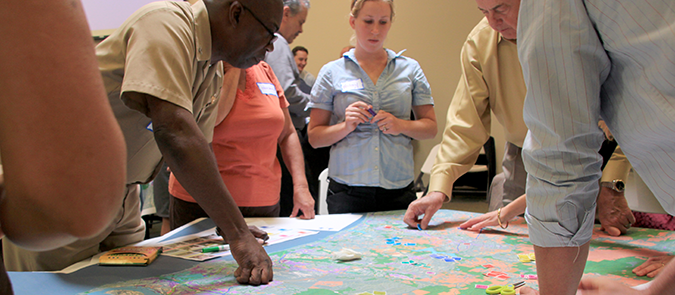San Diegans have been talking a lot about “collective impact” recently.
First coined in an influential Stanford Social Innovation Review article by John Kania and Mark Kramer, collective impact is the acknowledgment that we need to work better together, across our organizations and sectors, to tackle the complex social and environmental challenges our communities face.
But beyond greater collaboration, collective impact proposes a specific framework for, in the words of the Collective Impact Forum, getting from common goals to uncommon results.
[Tweet “#CollectiveImpact proposes a specific framework for getting from common goals to uncommon results.”]
Conditions of a Collective Impact Approach
The five basic conditions of a collective impact approach are:
- Partners share a common vision, agenda and approach
- Partners agree on the measures and methods for monitoring and sharing progress, impact and success
- Partners coordinate activities in a way that allows each group to do the work it does best while working in concert with other stakeholders
- Participants commit to open and consistent communications and have the tools to support meaningful communication
- Partners and their work together is supported by an independent, funded backbone infrastructure – a person or team that is skilled and can support ongoing aligned activities, evaluation and resource mobilization to support the effort
Collective Impact: More Than a Fad
As with all innovations, new tools and technologies in the social sector can raise the weariness of front line practitioners. Is this a new fad? Will this too go the way of the acid wash jeans and banana clips?
This trepidation is not unfounded.
The work performed by nonprofits in our communities is critical for the wellbeing of San Diegans and our region. There are no resources to waste on fleeting trends.
However, when it comes to collective impact – the spirit of the framework – it seems this one must stick.
The complexity of issues and the ever-increasing speed of change make it nearly impossible for any single agency to make a dent in the social and environmental issues we confront. This reality demands greater collaboration from unusual and sometimes unexpected partners.
The fundamental tenants of collective impact are simple and sensible; have a shared vision across organizations that represent the sectors that impact the system, track change the same way, align strategies to avoid duplication and maximize efforts, talk and listen, and have the support to carry on.
Already, some early efforts in San Diego have demonstrated considerable results, including efforts by the City Heights Partnership for Children, Project 25, the San Diego County Childhood Obesity Initiative [CHIP] and the San Diego Youth Opportunity Pathways Initiative.
Learn More
The stickiness of the collective impact model is perhaps in part in its simplicity and clarity.
Someday we might call it something different, but stronger collaboration toward the goals of collective impact are likely here to stay. Knowing how to be better partners and work together more effectively will serve our work and our region.




